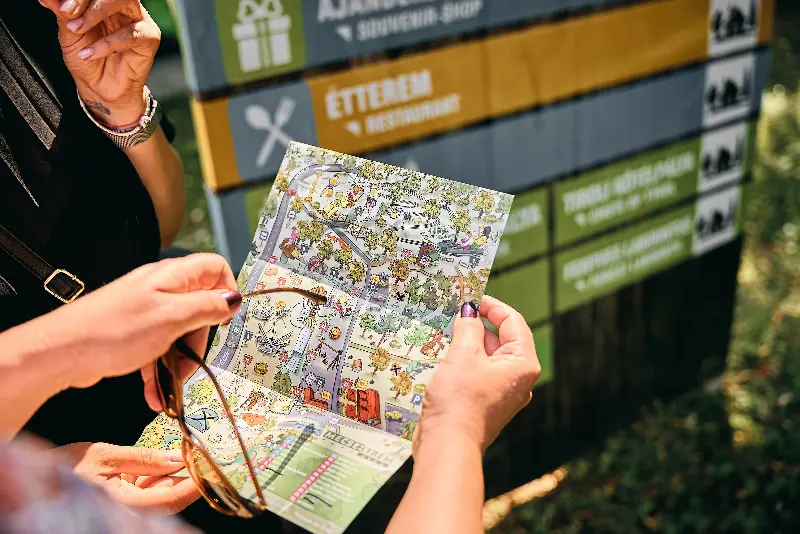
Helyszín címkék:
Head to Zselic even in the colder seasons!
Hype&Hyper
Zselic Star Park: look up to the sky!
There are few places in Hungary and on the continent where light pollution is as low as in the Zselic region. This is why the Zselic Star Park, which was the first in Europe to be awarded the title of International Stargazing Park in 2009, is located in the Zselic Landscape Conservation Area. Walking trails through the park’s woods lead to the multifunctional observatory. The complex features a telescope dome, film screenings in the Planetarium and astronomy-themed exhibitions, including the exploration of the solar system and meteorites. Although the facility is open all year round, access to the observatory is limited to pre-announced programmes.

In addition to the indoor programmes, you are free to explore the rest of the park at any time. One such exciting site is the lookout opposite the observatory building, at the highest point in the area. Each of the 5 floors of the 25-metre-high structure, built among the trees, has lookout sections, so you can study the forest inhabitants level by level. And the signboard here helps you to see how far you can see from the top of the lookout in clear weather: to the north you can see the Balaton-Highlands witness mountains, to the south-east the Mecsek range, and to the south the Croatian Papuk mountains.

Bőszénfa Deer Farm: experiences in the wildlife park
The Bőszénfa Deer Farm is situated in the heart of Bőszénfa on a 1300 hectare estate. The farm is home to nearly 2,000 big game – deer, wild boar, fallow deer, mouflon and roe deer. You can also see native animals such as grey cattle, water buffalo and racka sheep, as the park is not only a livestock breeding area, but also a breeding farm.
The park offers a restaurant serving game dishes, a guesthouse and a wide range of activities. There are several exhibitions in the game farm buildings: a collection of trophies and fallen antlers, as well as a look at the specificities of antler growth, from antler shedding to antler cleaning. On weekends, you can see the animals in the gentle deer garden, accompanied by an expert, or go deer watching by horse-drawn carriage or tractor. There is also a petting zoo with deer cows, bull deer, fallow deer and wild boars.
Skanzen in Szenna: immerse yourself in the architectural traditions of Zselic
In addition to the diversity of flora and fauna, the cultural values of the Zselic region make it one of Hungary’s most valuable destinations. Just eight kilometres from Kaposvár, in the centre of the village of Szenna, you will find the country’s first Europa Nostra Award-winning village museum. The initiative was launched back in 1978, with the aim of preserving the unique monuments of Somogy county’s unique plinthed-wooden framed folk architecture. Thus buildings from the villages of Inner-Somogy were relocated, preserving their original elements and furnishings. There are currently five residential buildings, but there are also vineyard cellars, sacral monuments and a machinery site where agricultural machinery used to be. As a part of the skanzen, you can also discover a folk Baroque church built in the 18th century, which is under monumental protection, with a special feature of its painted wooden ceiling decorated with folk motifs. In addition to the open-air exhibition, the Szenna Skanzen also offers a programme of folk traditions every month.





